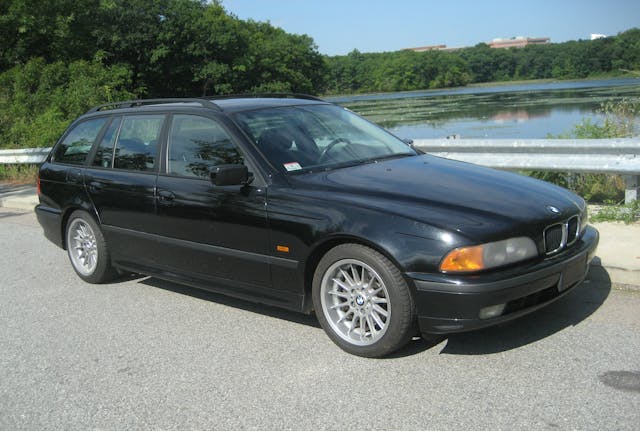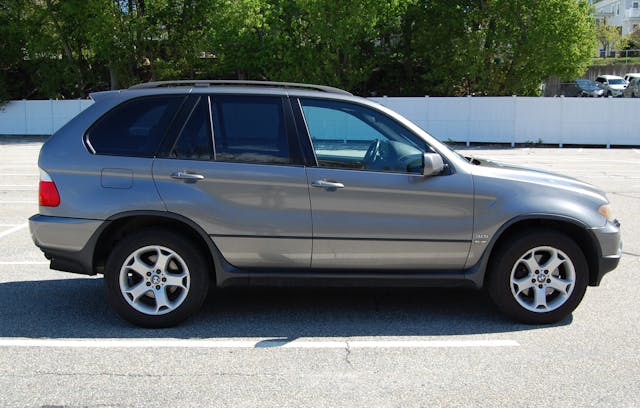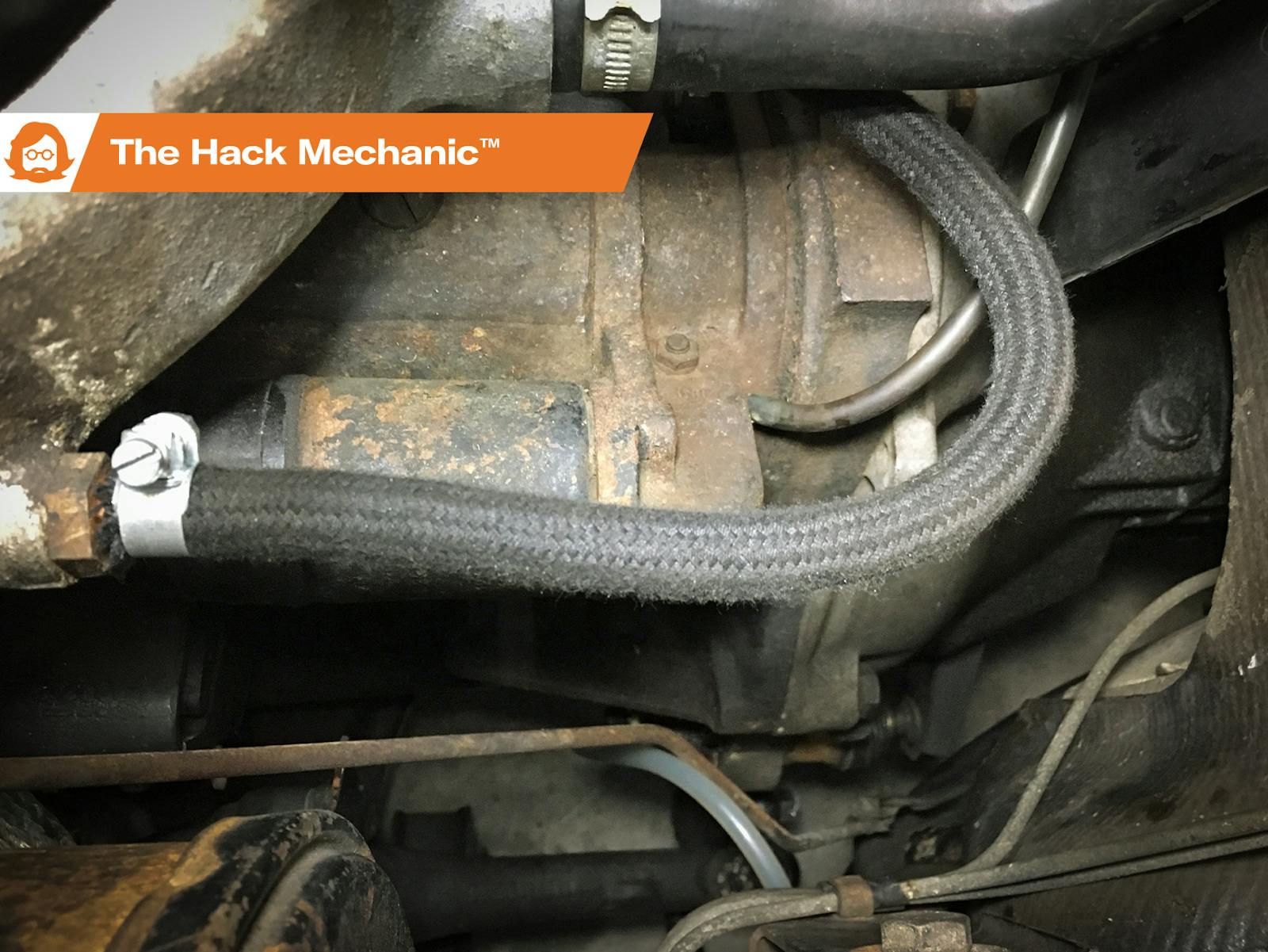The Rules of Repulsion

Last week, I wrote about “The Rules of Attraction.” In it, I talked about what pulls us toward a hobby or a passion in general, then looked specifically in the car world at what causes us to be lifelong devotees of a single make and model. I espoused that it’s a combination of an emotional connection to the car, the car’s exterior look, the interior vibe, and how it drives.
At the end, I quipped that I should write a companion piece about “The Rules of Repulsion”—or what makes us sell cars. I was joking at the time, but the more I thought about it, the more I realized that there’s meat here.
Peter Egan famously wrote in the March 2013 Road & Track, “I’ve discovered that a dull car is a lack of joy forever. It weighs on the soul, and you can’t forget for one moment that you aren’t having any fun. You look down the hood, and it’s like having an apartment with an ugly view. You want to close the curtains, but you can’t, because you’re driving.” I can’t say that I’ve ever sold a car simply because I thought it was boring. Maybe my standards need to be higher.
To dissect The Rules of Repulsion, I think you first need to draw a clear delineation between daily drivers and enthusiast cars, as the expectations for them are so vastly different that it results in different sets of rules.
For about 30 years, I had a five-mile commute from my long-time job. That dropped to zero miles six years ago when I began working from home. This, combined with the fact that I like working on cars, meant that, for my entire faux-adult life, I was willing and able to make the trade-off of not paying for a new or nearly new car, enabling me to own and daily-drive older cars instead, and put the money saved into non-daily enthusiast cars. With the exception of short periods, my daily drivers have been eight-to-20-year-old, high-mileage BMWs. I can justify it by talking about the appealing combination of performance, handling, and other factors, but hey, we like what we like.
It differs a bit with my wife’s cars. For years, those did double duty as the family haulers, so, no, they weren’t the 150,000-mile cars I was accustomed to buying and driving myself. For her, I’d typically look for two-year-old, sub-10,000-mile cars that were being sold at below market value. The Toyota Previa five-speed was because the seller’s wife never warmed to the stick. The Mazda MPV was a salvage vehicle due to light hail. The first Honda Fit purchased after gas prices spiked, then went back down, and the family was happy to go back to driving their SUV. The second Fit was another salvage vehicle, lightly damaged in a curb strike and repaired.
Whether it was my daily driver or my wife’s car we were turning over, the reasons were remarkably similar, and it wasn’t ever something as dramatic as the car dying and leaving us in the lurch or a catastrophically high repair bill. Instead, it simply was time. (Well, OK, with two of the family cars, it was because my oldest son wrecked them, but we won’t talk about that.)
My wife’s cars would typically last longer because we’d buy those newer and with far fewer miles on them. Typically, mine are already well into the autumn of their life when I get them, and thus they have less room before they run out of road and reach the point of decrepitude. But with any non-collectible car, if you own it long enough, that point does inevitably come like death and taxes. Yes, you can keep a car running forever, and keep patching rust, but it usually reaches a point where it makes less and less sense. This is particularly true on a daily driver.
The delineation between DDs and enthusiast/project cars is crucially important precisely because a daily driver needs to be exactly that—you need to be able to jump in it and drive it. Sure, it may occasionally need normal-wear-and-tear repairs (brakes, shocks, exhaust, suspension, etc.), and you may knock those off yourself efficiently, adroitly, and cost-effectively, but when it reaches the point where it needs an engine, or a transmission, or major rust repair, you look at the time, effort, and expense required, look at what else you could buy as a DD, consider what new technology that may get you (that used to be airbags and ABS; now it’s blind-spot detection and collision avoidance), and may well make the decision that it’s time to let old Bessie go. In contrast, if it’s a project car, you can roll it into the garage, close the door, and begin slowly chipping away at the needed repair as time allows.
Here in Massachusetts, the rust thing is crucial for DDs, as an inspection technician can fail a car for any hole in the body. So, when you see rust blisters forming on the wheel arches or the rocker panels of your daily driver, it’s a warning to start thinking about another car. You may make it through the next inspection, but maybe not the one after that. Even without the inspection issue, when rust blossoms, it’s very difficult to stop.
As I noted a few weeks ago, it’s harder and harder to find shops willing to take on spot rust repair. You could roll the dice and find someone on Craigslist who advertises that they’ll repair rust and spot-paint inexpensively it at your house, but in a you-get-what-you-pay-for world, the odds are that the repair will show. Short of the kind of a bare-metal body restoration that a valuable vintage car might get, rust will come back. On an enthusiast / project car, you can slow the process enormously by simply keeping the car dry (e.g., certainly not driving it in the snow and salt, and even keeping it out of the rain), but the very meaning of “daily driver” is that it’s the car’s job to make the appointed rounds, regardless of the snow or rain or gloom of night.
I’ll sometimes do a needed repair beneath a daily driver—something such as exhaust replacement—and even when I don’t see rust-through, sense that it’s time to move the car along. For decades, nearly all cars have had galvanized bodies and some form of undercoating. In addition, plastic cladding protecting the underbody became increasingly common, so rotted frame members and holes in the floorboards aren’t as ubiquitous as they once were. However, there is a lot of metal under a car in addition to the frame and floorboards, so—particularly in a region where snowy roads are salted—it’s not uncommon to crawl under an older high-mileage car and see rust absolutely encrusting every metal component … the trailing arms, the fasteners holding on the shock absorbers, the metal brake lines, the hose clamps, on and on. I’ll sometimes complete that one repair (for example, hanging an exhaust that I’ve already purchased), then move the car along.
All that having been said, there are six daily drivers that stand out in my mind in which, instead of having the “it’s time” epiphany, I made a specific decision to sell them and was happy to see them go.
1970 Triumph GT6+

This goes back all the way to the beginning. I bought my GT6 in 1976 at the end of my senior year of high school. It was only a six-year-old car, and the degree to which metal fatigued, parts broke, rust exploded, and electrons traveled on unexpected paths was truly astonishing. On the one hand, even though the car was my daily driver for three years, it’s perhaps a bit unfair to include it in this list, as by modern standards, nearly all cars from that period were junk. But on the other hand, it ran less than half the time I owned it, I was a poor college student, it bled me dry, and even though I loved it, there was no choice but to let it go, and once I did, I can’t say I shed a tear for it. I mean, I suddenly had beer money.
1999 Chevy Metro

In 2008, as gas prices spiked, I bought a well-used 1999 Chevy Metro—the little 1800-pound Geo Metro / Suzuki Swift hatchback with the three-cylinder 55-horsepower engine and a Chevy bow tie on the hood. It was a rather odd experiment to see if you needed to pay Prius prices (which, as a then-new car, were extremely high) to get Prius levels of fuel economy. On a college visitation road-trip swing with my middle son, I found that, if I held it at 55 mph, it actually did get over 50 mpg on the highway. Around town, if I drove it as if there was an egg on the accelerator pedal, it got nearly 40 mpg, but as I started to scoot around more in it, that dropped closer to 30.
The metal on the car was so light and thin that trying to remove fasteners to replace the shifter bushings caused shift linkage components to bend. I got tired of my little experiment and gave the car to my oldest son. Since I had other much cooler cars, he was not pleased, and initially accused me of, well, I can’t use the appropriate slang, so let’s just say “impeding with his ability to reproduce.” However, one day he called me and said, “Dad, I just drove the Metro from Boston to New York to Amherst, and I think I used $15 in fuel!” He went into AmeriCorps for a year, and the car landed back in my driveway. I was happy when someone else snatched it up to pursue dreams of non-hybrid hyper-mileage.
1991 Toyota FZJ80 Land Cruiser

At the opposite end of the scale from the Metro was the 1991 Toyota Land Cruiser. It strains the bounds of truth to call the TLC a daily driver, but I’ve included it because it was a car I moved along for a very specific reason. After decades of using a series of Suburbans to take the family on our annual Nantucket beach vacation, with my older two sons gone I thought I’d try something smaller.
The earlier, boxier Spartan Toyota FJ60 Land Cruisers had already become enthusiast vehicles, but the 1990s FZJ80 TLCs—the ones that were badged as Lexus LX450s in 1995 and ’96—were still relatively inexpensive, and their reputation for reliability was unmatched. So I bought one. It was a very cool vehicle. I loved the fact that it was actually built for off-roading; it had front trailing arms nearly as long as my leg, and ball joints the size of grapefruits.
Instead of selling it after the beach vacation or pulling it off the road, as I usually did with the Suburbans, I kept it around, letting my middle son use it while he was home for the holidays. Then, one day, he asked, “Dad, what’s up with the gas mileage in the Land Cruiser?” In truth, I’d never measured it, just as I’d never measured it with the Suburbans. Why would I? I bought them for a purpose, they were necessary for that purpose, and they sucked what they sucked. But it turns out that, with the FZJ80, the combination of a 6000-pound vehicle with all-wheel-drive, 212-hp engine, and a primitive digital engine management system yields only 11 miles per gallon—certainly worse than the Suburbans.
These days, electronics and software do a great job of maximizing power and fuel economy, but in 1993, not so much. Like Walt Whitman, I have no problem with contradictions (“I am large. I contain multitudes.”), but if I’m going to drive a vehicle that gets 11 mpg, it should have a name that ends in “i,” curves like Raquel Welch, and leave smoking acrid tire plumes in its wake. With no more soft sand to drive on, and with the fuel bill so out of whack for running errands that none of us wanted to drive it, the TLC went bye-bye.
1999 BMW 528iT Sport Wagon

My ’99 BMW 528iT stick sport wagon had a lot going for it. It was a sport package car, which gave it a slightly hunkered-down suspension. It was a five-speed, rare in an E39 wagon. It had the pneumatic rear suspension, so if you threw bulk in the back, it would pump itself up to the proper ride height. It was a good-sized wagon—about the size of an old Taurus—and handled better than a vehicle that size had a right to. Unfortunately, it was one of those cars that, when you bought it, you signed up for the repair-of-the-week plan and didn’t know it.
Things kept going wrong with it. Small things. Then big things. First, the rear pneumatics failed. Then, in freezing weather, the oil separator froze, sending oil into the intake manifold and nearly hydro-locking the engine (in fairness, this can happen on many cars with a similar oil separator design). Then, after I resurrected the car, on its maiden voyage one of the front springs broke and punctured a tire. I finally realized that the car’s needs were that of an enthusiast car when I needed it to be a daily driver.
I liked it a lot but didn’t love it so much that I could buy something else to daily drive and relegate it to pampered enthusiast car status. So I sold it.
2003 BMW 325XiT Wagon

My smaller replacement for the E39 528iT wagon, the E46 325XiT wagon wasn’t a repair-of-the-week plan car, but I never loved it. Like the E39 wagon, it was a five-speed sport package car, but although the all-wheel drive was great in snow, it made the characteristically snappy BMW steering feel a bit numb. And when the front CV joints started clicking during turning, as they invariably will do on a front-wheel or all-wheel drive car, pulling the front axles to replace them was so onerous that I never wanted to do the job again on that or any other AWD BMW.
And snapping a bolt while replacing the front struts, and then having to drill it out, added to the feeling that, as a daily driver it was too needy. As rust began to blossom on the car’s rear fender lips, I sold it. I will admit, though, that I continue to be on the lookout for the rear-wheel-drive stick version of this wagon. Unfortunately, there aren’t many, and they’re highly sought after.
2005 BMW X5

The X5 I found was a triple unicorn. It had an uber-rare six-speed manual transmission. It had the sport package with the less wallowy suspension and the sport seats. And it had the dealer-installed tow package—so, if necessary, I could use it to haul home my latest crime of opportunity. It had 270,000 miles on it, but you would’ve thought it had only 70,000. The interior was amazing, the exterior was pretty, and since the car had lived most of its life in North Carolina, the undercarriage was rust-free. It made so much sense on paper. I bought it and basically abandoned my 2003 E39 530i stick sport, which had been my daily, in my driveway.

I liked the X5, but I never really warmed to it. Like the 325XiT wagon, I just wasn’t crazy about the steering feel as compared with the rear-wheel-drive BMWs I’ve driven for decades. And I’m not a guy who wants the height and bulk of an SUV over a sedan.
I bought it in the fall of 2019. When the pandemic stormed through in March 2020, the last thing I was hot to do was drive around looking at dead cars I could tow home. I floated it for sale on Facebook, and an acquaintance who was looking for that exact option package snatched it up. A transport arrived, and in a contactless remote purchase, it was gone. When I transferred the plates back to the E39 530i stick sport sedan and drove it, I felt, “Ah … this is so much better.”
So, “Rules of Repulsion?” Obviously, I wasn’t actually “repulsed” by any of these cars. I mean it’s not like one of them was a Pontiac Aztek. (Yo. Rob. A Chevy Metro?) And, as Captain Hector Barbosa said in Pirates of the Caribbean, “They’re more what you’d call ‘guidelines’ than actual rules.”
***
Rob Siegel’s new book, The Best of the Hack MechanicTM: 35 years of hacks, kluges, and assorted automotive mayhem, is available on Amazon. His other seven books are available here, or you can order personally-inscribed copies through his website, www.robsiegel.com.

